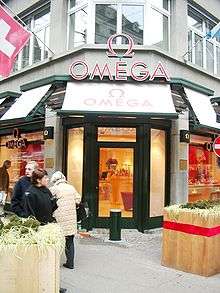Ram-raiding
Ram-raiding is a type of burglary in which a van, truck, SUV, car, or other heavy vehicle is driven into the windows or doors of a closed shop, usually a department store or jeweller's shop, to allow the perpetrators to loot it.

Overview
This act has occurred since at least the mid-1930s. The term came into widespread use after a series of such raids in Belfast in 1979 that was covered in news reports and in countries such as Australia that inspired a series of similar crimes.
Notably, large trucks are used to break into technology companies and steal high-value equipment for resale on the black market.
Commercial properties in areas prone to ram-raids often erect strong barriers or obstructions, such as bollards, to discourage such attacks. ATM centres are also victims of ram-raiding, with criminals smashing the machines to steal cash boxes.[1][2][3]
Many companies have come up with solutions to ram-raiding.[4] Everything from electronic bollards to electronic barriers has been employed to keep property from the raiders.
Another solution is security guards, but round-the-clock teams are expensive and often not the most economical way of dealing with ram-raiding.
See also
References
- "Video: ATM ram raid caught on camera". News.com.au. Archived from the original on 2015-06-27.
- Robertson, David (May 30, 2015). "Ramraiders chain up ATM and drag it away in Launceston robbery". ABC News.
- Butcher, Steve (October 14, 2013). "Ex-police employee jailed for planning ATM ram raids". The Age.
- 'Raminator' foils ATM ram raids. The Daily Telegraph. 21 Aug. 2008.
External links
- "Ram-raid gang steals cash machine". Leeds: BBC. March 2007.